产品名称:结晶紫中性红胆盐琼脂(VRBA)颗粒规格
英文名称: Violet Red Bile Agar
产品规格: 300ml/袋*10
产品用途: 用于大肠菌群的固体平板检测
成分(g/L)
蛋白胨 7.0
酵母粉 3.0
氯化钠 5.0
乳糖 10.0
胆盐 1.5
结晶紫 0.002
中性红 0.03
琼脂 15.0
pH值7.4 ± 0.1 25℃

结晶紫中性红胆盐琼脂(VRBA)颗粒规格操作步骤:
(一)准确称量试剂:根据不同的菌类和用途,选择适宜的培养基,培养基所需试剂必须纯净。
(二)校正pH值:将称量好的培养基各种成分放入容器内,标记划线,加热溶解,补充水分,测定酸碱度,常用pH6.8~8.0的精密试纸或酸度计测定。用1N NaOH和1N HCl调节pH值到适宜范围内。
(三)过滤:将玻璃漏斗置铁架上,再用纱布夹棉花或用滤纸放在漏斗中,将上述培养基倒入其中过滤至透明。
(四)分装:将过滤后的培养基分装于中试管或三角瓶内(试管内每支装5mL;三角瓶中装100~150ml),塞好棉塞用牛皮纸包扎好,准备灭菌。
(五)灭菌:培养基的灭菌,常用高压蒸汽灭菌法。一般微生物的营养细胞在水中煮沸后即被杀死,但细菌的芽胞有较强的抗热性,须经高压蒸汽灭菌才能达到彻底灭菌的目的。根据蒸汽温度随压力升高而上升的原理,即压力越大,蒸汽温度就越高。因此,在同一温度条件下,采用高压蒸汽灭菌比干热灭菌法效果要好。而且在湿热情况下,菌体吸收水分后,其蛋白质易于凝固变性,因为蒸汽的穿透力强,杀菌效果好。
结晶紫中性红胆盐琼脂(VRBA)颗粒规格实验内容
1.称量→溶化→调pH→过滤→分装→加塞→包扎→灭菌→无菌检查
2.干热灭菌:装入待灭菌物品→升温→恒温→降温→开箱取物
3.高压蒸汽灭菌:加水→装物品→加盖→加热→排冷空气→加压→恒压→降压回零→排汽→取物→无菌检查
4.过滤CJ:组装灭菌→连接→压滤→无菌检查→清洗灭菌
结晶紫中性红胆盐琼脂(VRBA)颗粒规格特点:
(1)MS培养基 它是1962年由Murashige和Skoog为培养烟草细胞而设计的。特点是无机盐和离子浓度较高,为较稳定的平衡溶液。其养分的数量和比例较合适,可满足植物的营养和生理需要。它的硝酸盐含量较其他培养基为高,广泛地用于植物的器官、花药、细胞和原生质体培养,效果良好。有些培养基是由它演变而来的。
(2)B5培养基 是1968年由Gamborg等为培养大豆根细胞而设计的。其主要特点是含有较低的铵,这可能对不少培养物的生长有YZ作用。从实践得知有些植物在B5培养基上生长更适宜,如双子叶植物特别是木本植物。
(3)White培养基 是1943年由White为培养番茄根尖而设计的。1963年又作了改良,称作White改良培养基,提高了MgSO4的浓度和增加了鹏素。其特点是无机盐数量较低,适于生根培养。
(4)N6培养基 是1974年朱至清等为水稻等禾谷类作物花药培养而设计的。其特点是成分较简单,KNO3和(NH4)2SO4含量高。在国内已广泛应用于小麦、水稻及其他植物的花药培养和其他组织培养。
(5)KM-80培养基 它是1974年为原生质体培养而设计的。其特点是有机成分较复杂,它包括了所有的单糖和维生素,广泛用于原生质融合的培养。
皮状丝孢酵母 Trichosporon cutaneum
伯顿毕赤酵母 Pichia burtonii
皮状丝孢酵母 Trichosporon cutaneum
皮状丝孢酵母 Trichosporon cutaneum
皮状丝孢酵母 Trichosporon cutaneum
皮状丝孢酵母 Trichosporon cutaneum
暂无 Trichosporon mycotoxinivorans
皮氏假单胞菌 Pseudomonas pickettii
皮落青霉 Penicillium crustosum
皮革正青霉 Eupenicillium alutaceum
膨端青霉 Penicillium inflatum
泡盛曲霉变种 Aspergillus awamori var.
泡盛曲霉变种 Aspergillus awamori var.
泡盛曲霉变种 Aspergillus awamori var.
泡盛曲霉变种 Aspergillus awamori var.
泡盛曲霉变种 Aspergillus awamori var.
泡盛曲霉变种 Aspergillus awamori var.
泡盛曲霉变种 Aspergillus awamori var.
moderate levels in the adrenal cortex, adrenal medulla, thyroid gland,and the kidney, and at lowest levels in the heart, ovary, small intestine, thymus, pancreas and spleen. The extra-hepatic sites of expression may be important for the local protection and inflammatory response.
Post-translational modifications : Prior to secretion, the single-chain precursor is enzymatically cleaved to yield non-identical chains alpha, beta and gamma. During activation, the alpha chain is cleaved by C1 into C4a and C4b, and C4b stays linked to the beta and gamma chains. Further degradation of C4b by C1 into the inactive fragments C4c and C4d blocks the generation of C3 convertase. The proteolytic cleavages often are incomplete so that many structural forms can be found in plasma.
N- and O-glycosylated. O-glycosylated with a core 1 or possibly core 8 glycan.
DISEASE : Defects in C4A are the cause of complement component 4A deficiency (C4AD) [MIM:614380]. A rare defect of the complement classical pathway associated with the development of autoimmune disorders, mainly systemic lupus with or without associated glomerulonephritis.
Defects in C4A are a cause of susceptibility to systemic lupus erythematosus (SLE) [MIM:152700]. A chronic, inflammatory and often febrile multisystemic disorder of connective tissue. It affects principally the skin, joints, kidneys and serosal membranes. It is thought to represent a failure of the regulatory mechanisms of the autoimmune system. Note=Interindividual copy-number variation (CNV) of complement component C4 and associated polymorphisms result in different susceptibilities to SLE. The risk of SLE susceptibility has been shown to be significantly increased among subjects with only结晶紫中性红胆盐琼脂(VRBA)颗粒规格two copies of total C4. A high copy number is a protective factor against SLE.
Similarity : Contains 1 anaphylatoxin-like domain.
Contains 1 NTR domain.
Database links : UniProtKB/Swiss-Prot: P0C0L4.2
 结晶紫中性红胆盐琼脂(VRBA)颗粒规格
结晶紫中性红胆盐琼脂(VRBA)颗粒规格
 BS1047结晶紫中性红胆盐MUG琼脂(VRBA-MUG) BS1047结晶紫中性红胆盐MUG琼脂(VRBA-MUG)
BS1047结晶紫中性红胆盐MUG琼脂(VRBA-MUG) BS1047结晶紫中性红胆盐MUG琼脂(VRBA-MUG)
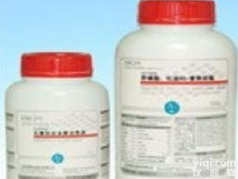 结晶紫中性红胆盐葡萄糖琼脂(VRBDA) 结晶紫中性红胆盐葡萄糖琼脂(VRBDA)
结晶紫中性红胆盐葡萄糖琼脂(VRBDA) 结晶紫中性红胆盐葡萄糖琼脂(VRBDA)
 结晶紫中性红胆盐琼脂(VRBA) 结晶紫中性红胆盐琼脂(VRBA)
结晶紫中性红胆盐琼脂(VRBA) 结晶紫中性红胆盐琼脂(VRBA)
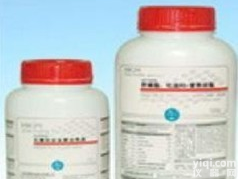 结晶紫中性红胆盐葡萄糖琼脂(VRBGA) 结晶紫中性红胆盐葡萄糖琼脂(VRBGA)价格
结晶紫中性红胆盐葡萄糖琼脂(VRBGA) 结晶紫中性红胆盐葡萄糖琼脂(VRBGA)价格
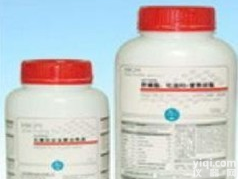 结晶紫中性红胆盐葡萄糖琼脂(VRBDA) 结晶紫中性红胆盐葡萄糖琼脂(VRBDA)价格
结晶紫中性红胆盐葡萄糖琼脂(VRBDA) 结晶紫中性红胆盐葡萄糖琼脂(VRBDA)价格
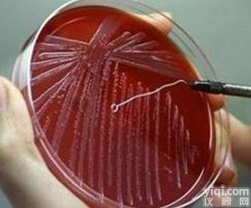 结晶紫中性红胆盐琼脂(VRBA) 结晶紫中性红胆盐琼脂(VRBA)价格
结晶紫中性红胆盐琼脂(VRBA) 结晶紫中性红胆盐琼脂(VRBA)价格
 结晶紫中性红胆盐MUG琼脂(VRBA-MUG)的价格,结晶紫中性红胆盐MUG琼脂(VRBA-MUG)的生产家
结晶紫中性红胆盐MUG琼脂(VRBA-MUG)的价格,结晶紫中性红胆盐MUG琼脂(VRBA-MUG)的生产家
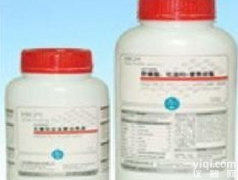 结晶紫中性红胆盐琼脂(VRBA) 结晶紫中性红胆盐琼脂(VRBA)价格
结晶紫中性红胆盐琼脂(VRBA) 结晶紫中性红胆盐琼脂(VRBA)价格
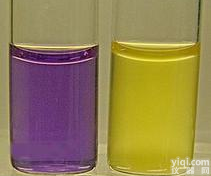 结晶紫中性红胆盐葡萄糖琼脂(VRBDA) 结晶紫中性红胆盐葡萄糖琼脂(VRBDA)
结晶紫中性红胆盐葡萄糖琼脂(VRBDA) 结晶紫中性红胆盐葡萄糖琼脂(VRBDA)
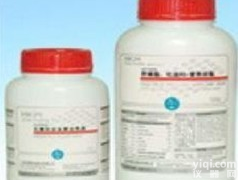 结晶紫中性红胆盐琼脂(VRBA) 结晶紫中性红胆盐琼脂(VRBA)
结晶紫中性红胆盐琼脂(VRBA) 结晶紫中性红胆盐琼脂(VRBA)
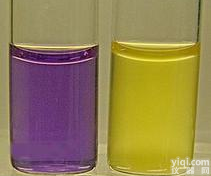 结晶紫中性红胆盐葡萄糖琼脂(VRBGA) 结晶紫中性红胆盐葡萄糖琼脂(VRBGA)
结晶紫中性红胆盐葡萄糖琼脂(VRBGA) 结晶紫中性红胆盐葡萄糖琼脂(VRBGA)